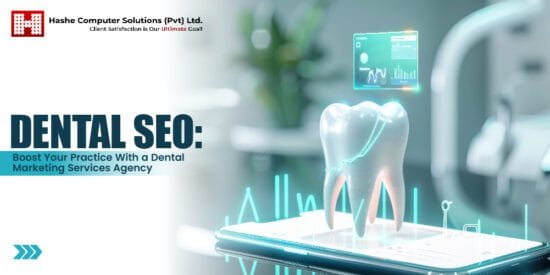
The current era of technological advancement prompts businesses to maintain their competitiveness since it is essential for meeting the high-tech demands of today’s customers. That said, the firms require exceptional development to meet the customers’ expectations. Occasionally, new programming languages and technologies emerge on the horizon of the tech industry; success depends on recognizing and utilizing them.
If acquiring IT staff is difficult and expensive, how can you reliably have a development team with the correct size and structure to use new technologies and tackle today’s problems? That’s where staff augmentation enters the scenario.
More companies are considering alternative employment options instead of more conventional recruitment tactics, including solely depending on full-time, internal workers, as company goals continue to change and adapt quickly. Staff augmentation is an efficient model to consider as part of your company’s larger staffing management strategy or talent planning initiatives.
IT staff augmentation focuses on increasing in-house team size by outsourcing the necessary personnel. It keeps a business flexible and avoids the headaches of hiring in-house experts, particularly when specialized or top-tier talent is required. This article explains what staff augmentation is, why it’s important, its benefits and drawbacks, different models, and how to use the best augmentation model when hiring offshore devs.
What is Staff Augmentation?
Staff augmentation is a strategic technique for talent management in which firms temporarily supplement their team’s capability with external personnel. You can acquire in-demand talent using this method without having to handle the hiring process yourself. Additionally, you continue to have authority over the work’s completion schedule and method.
Businesses use staff augmentation services for numerous reasons, such as gaining access to specialist expertise, expediting project schedules, or expanding or contracting teams without having to hire more full-time staff. Staff augmentation helps many industries achieve better business results, but IT benefits the most.
How Staff Augmentation Works
The IT sector and tech startups first used staff augmentation to solve a shortage of tech skills in the rapidly growing fields of general IT, software development, and cybersecurity.
As the global employment sector has grown significantly over the years, staff augmentation has spread outside IT and tech.
The staff augmentation procedure usually starts when a company realizes it needs more employees and is searching for alternatives to hiring full-time employees. An external supplier or online talent platform oversees staff augmentation, finding, assessing, and employing competent applicants who fit a company’s budget, business demands, and skill requirements.
Engagements for staff augmentation are frequently paid on an hourly or fixed-price project basis. However, some providers may also offer a retainer pricing structure wherein businesses pay a fixed monthly cost for a predetermined number of hours per month.
Types of Staff Augmentation
There is no one-size-fits-all approach to augmenting IT staff. Two factors to consider when examining staff augmentation models for your team are the skill level and location.
Commodity-Based Augmentation
This kind of augmentation typically adds more employees to a business. It entails employing workers who can carry out the fundamental duties needed by the company but are not necessarily highly skilled. Businesses that need to fill low-skilled roles or have a shortage of workers and need to hire individuals fast can use commodity-based augmentation.
Skill-Based Augmentation
The goal of skill-based augmentation is to hire people who possess specific skills. Compared to commodity-based augmentation, this method is more strategic and focused. However, these new employees do not have to be experts. This skill level flexibility enables you to obtain talented help at a lesser cost than hiring real specialists.
Highly-Skilled Augmentation
Highly-skilled augmentation is the preferred choice for tasks needing a high degree of experience and expertise. These temporary employees can manage significant project components or resolve challenging issues that exceed the skills or competence of your current personnel. Depending on the project and your hiring strategy, you can recruit these experts for either short-term or long-term assignments.
Nearshore/Offshore Augmentation
Offshore and nearshore augmentation entails recruiting employees from overseas. Offshoring enables you to reach a larger talent pool, including those in less expensive areas. Limiting talent sourcing to specific countries or places closer to home is known as nearshoring, and it has comparable advantages. Costs and international laws are just two of the many variables that influence nearshoring decisions.
Onshore Augmentation
Hiring temporary employees from inside your home market is known as onshore augmentation. Hiring is often easier because there is less to understand about labor and wage rules. Since these employees are more likely to have similar working languages and cultures, integrating them may also be easier. Onshore augmentation is especially beneficial for projects requiring regular face-to-face meetings and collaboration during shared working hours.
When to Opt for Staff Augmentation
Carefully planning when and under what conditions to grow headcount is crucial. Here are five situations where your company can benefit significantly from staff augmentation.
To Strengthen Your In-House Team
Complementing or improving your knowledge is crucial when launching a new product or beginning a new project, even if you have in-house software developers. Adding more IT staff is a smart move in that situation.
To Bridge Skill Gaps
Your business can be working on several initiatives at once. Many of these initiatives necessitate a wide range of expertise from other specialties. Demand for these specific skills is continuously changing, so you must manage this issue on a project-by-project basis.
With staffing, you can bring in seasoned professionals with specialized knowledge that might not be required for other projects. Thus, you can avoid investing time, effort, and financial resources in teaching your internal staff these temporary skills.
To Quickly Grow the Team
If you require a local developer with an extensive understanding of IoT, Dart, and so on, be prepared to look for a while. Finding and employing an expert takes less time with the augmentation model. You only have to contact the vendor, check the developer’s resume, and schedule an interview.
To Meet the Deadline
From job posting to onboarding, the hiring process takes a long time. It often takes two months, and you most likely lack the patience and time to wait that long. Regardless of the duration of your contract (short or long-term), staff augmentation is a successful strategy to fulfill your needs and grow your IT personnel, especially when you have to meet the deadline.
Other Models aren’t Suitable for You.
You may encounter this problem if you want to manage the developer’s workload directly and require greater control over their job. An extra incentive to concentrate on your business may come from the seamless integration of software engineers into your team.
Benefits of Staff Augmentation
Employers have numerous personnel alternatives, including full-time hires, contracts, project outsourcing, and managed services. While many firms may employ all these, a staff augmentation service is usually the best option for IT personnel needs. Here are a few advantages.
Scalability and Flexibility
Augmenting the IT workforce is naturally flexible. You can swiftly scale up or down for maximum resource usage with on-demand teams of engineers. When you only require specific skill sets temporarily, this method avoids the rigidity and additional expenses of full-time recruiting. Additionally, staff augmentation offers greater flexibility than managed services, which provide stability but lack agility due to predetermined service scopes.
Affordability
Staff augmentation may be more affordable than full-time recruits, who need pay, benefits, training, and other remuneration. It allows you to coordinate their spending with project budgets, so you only pay for your requirements. Project outsourcing also provides cost certainty; however, asking another business for control over a project may come at a price. Additionally, there are expenses associated with client management, particularly in the case of a problem.
Access to the Global Pool of Talent
Staff augmentation provides access to a global pool of specialist talent, allowing you to locate the ideal candidate for your projects and timeframes. This has an advantage over full-time hiring, when a more general skill set or geographic restrictions may limit the talent pool.
If you require specialist skills for intensive work temporarily, staff augmentation is preferable to independent contractors, who are likely serving several clients. Companies can more easily access talent across geographic boundaries using staff augmentation services than by attempting to work with contractors in those areas.
Fast Integration and Onboarding
Staff augmentation enables speedy hiring, onboarding, and integration, which is especially beneficial when onboarding software developers remotely. Staff augmentation organizations can quickly integrate on-demand staff, allowing them to begin working immediately. Full-time employees or independent contractors going through company onboarding processes may not have the same experience.
Reduced Hiring Risks
The staff augmentation provider frequently manages payroll and other HR-related procedures for augmented team members, lowering internal administrative costs and resources. The proper vendor will also offer integrated compliance capabilities and worker classification services to help you reduce risks when hiring external labor.
Options to Hire Talent on a Trial Basis.
Staff augmentation allows firms to engage potential team members for a trial run before determining whether to hire them full-time. This procedure enables the business to take its time to assess whether the individual is a suitable fit for the current team and company culture, as well as whether particular abilities are required on the team permanently.
Challenges of Staff Augmentation
These are some challenges that businesses may face when implementing staff augmentation.
Trouble Integrating With Existing Teams
It is never easy to integrate new employees. When adopting IT staff augmentation, you may encounter objections from your in-house employees, particularly if they feel threatened or shocked by the newcomers. Explain your decision to hire additional people and the value they will bring.
Ensure you are integrating the new hires into the culture, communication norms, and technical responsibilities. It is particularly crucial when adding remote employees.
Communication Barriers
Effective communication is essential for high-stakes, quick-paced initiatives where team members need to collaborate rapidly and produce outcomes. Time zone differences, languages, and cultural nuances are all hurdles to effective communication and conflict resolution.
Ineffective communication results in miscommunication, mismatched project goals, and inefficiencies, besides hurt feelings, cliques, and other undesirable workplace dynamics.
Poor Work Quality
Finding the proper personnel is not always straightforward, especially for highly specialized skill sets or unique projects that do not follow best practices. This may also lead to poor work quality. Thankfully, staff augmentation companies carefully screen applicants. However, they also require specifics about your requirements.
Over-Reliance on External Staffing
Relying extensively on augmented personnel can result in an overreliance on outside expertise or a failure to document institutional knowledge. Long-term competitiveness may suffer, and on-demand talent may find it more challenging to catch up. Ensure you are collaborating with a staffing augmentation firm to document any best practices or work schedules.
Compliance and Tax Issues
While outsourcing for talent can alleviate many of the human resource and administrative burdens associated with hiring full-time employees or independent contractors, organizations must still manage compliance and tax obligations.
Ensure that you have a formal contract with a clear scope of work, project timeframes, and terms for payment and renewal when working with IT staff augmentation companies. Consider having counsel analyze these contracts for compliance. This provides clarity for everyone so that your teams can start working.
Staff Augmentation vs. Other Outsourcing Models
IT staff augmentation refers to the outsourcing of necessary talent. It is only one of the numerous outsourcing models available, though. Other alternatives include time and material (T&M), offshore development centers, independent contractors (freelancers), and dedicated teams.
These outsourcing models often include some aspects that may be similar or different. Among these are who is in charge of what, including:
- Office facilities
- Recruiting
- Payroll
- Engagement
- Management
- Overhead expenses
- Salary reviews
- Employee perks
- Communication
- Rate review
Let’s see how staff augmentation compares with other models.
Staff Augmentation vs. Independent Contractors
Employing a freelancer would mean that you (or a client) would be accountable for most, if not all, of the previously listed issues. You would need to handle communication, management, payroll, etc., all of which would be covered by a vendor if you opt for IT staff augmentation.
Conversely, employing independent contractors will spare you from paying a vendor a commission. You would hire the contractor directly instead. However, it is vital to note that an independent contractor’s position in an organization is subject to specific limits. For example, when working with an independent contractor, you wouldn’t have to pay for overhead or offer employee perks. Additionally, they may have limited access to company data or information.
Staff Augmentation vs. Managed Services
The degree of control a customer gives the vendor is the most prominent difference between IT staff augmentation and managed services. The latter functions as a one-in-all service, whereas the former just provides the vendor with the necessary staff provisioning; the remainder remains under the client’s control. Manager services providers assume external control over a client’s non-core systems. When supplying talent, they oversee every facet of the client’s operations.
Consequently, managed services require a higher level of delegation. It can frequently be an effective solution for businesses trying to maximize resource allocation and focus solely on their internal teams for strategic initiatives.
Staff Augmentation vs. Dedicated Teams
Despite the apparent similarities between these two outsourcing models, there is a significant distinction: when a client requests a dedicated team, the outsourced vendor takes on more responsibility.
You may supervise your remote developers via resource and staff augmentation, but a dedicated team works under the vendor’s oversight. The former assumes full-time involvement, whereas the latter frequently serves several clients on a given day. While the client analyzes salaries when augmenting staff, the vendor reviews salaries for dedicated teams.
Staff Augmentation vs. Offshore Development Centers
The distinction between staff augmentation and offshore development centers (ODC) is comparable to the difference between renting an apartment and building your own house.
Your vendor will set up a representative office for you, known as an ODC. They will hire employees, locate an office, and find additional service providers for supplies, furnishings, internet connections, etc. All of this will be covered in the vendor’s fee, and after everything is set up, you will be able to manage the team and the office on your own because it will be part of your business.
Staff Augmentation vs. Time and Material (T&M)
Under the time and material outsourcing model, a customer pays for the time a development team or individual developer spends working for them. In contrast, staff augmentation entails the temporary employment of employees by augmentation firms, which also manage all employment-related taxes, paperwork, and administrative costs.
Here, a client has the option to handle payroll if they so choose. Salary reviews and benefits are typically the client’s responsibility, but suppliers may also occasionally handle things.
How to Choose the Right Staff Augmentation Model
When outsourcing talent, the success of your project depends on your choice of staff augmentation and resources. When selecting the augmentation model, keep the following points in mind.
- Project Duration: Consider your project’s approximate timeframe. Staff augmentation is the best option if the project will take fewer than six months to complete. Otherwise, you can choose from the other models.
- Evaluating Costs: Evaluate the costs of training your in-house dev team to work with augmented staff. Check out how it compares to the price of outsourcing the whole project or recruiting a dedicated team. Staff augmentation may fall short of its cost-saving potential if management and communication procedures are ineffective.
- Data Sensitivity: Consider how sensitive the information you disclose is. Entering an augmentation contract with NDA terms and conditions with the relevant provider and developers is always a smart idea.
What You Should Look for in a Staff Augmentation Provider
Like any company partnership, hiring more IT professionals requires careful consideration. Before signing a provider agreement, consider the following things.
Track Record and Expertise
Look for a company with a track record of providing high-quality services in your sector or domain. To get a closer idea of who they serve best, look for reviews, case studies, or client lists. Look for accolades, industry associations, or certifications that attest to their dedication to quality.
Use pre-contract discussions to determine whether you and the provider agree on personnel requirements, timetables, budgets, and other factors. Don’t be afraid to ask any questions that can damage the relationship.
Selecting the provider that best suits your talent requirements and who can genuinely increase your production and productivity is made easier with thorough screening.
Scalability and Flexibility
Staff augmentation aims to offer scalability and flexibility. When looking for providers, bring data about your current staffing needs and how they may grow over time. This enables you to evaluate the provider’s solutions against your demands, which may include a range of contract alternatives depending on time and projects.
Request that prospective suppliers describe how they integrate new team members. This is particularly crucial for remote software developers who need to be adept at working independently and communicating asynchronously.
Cultural Fit
Cultural fit is critical in staff augmentation. Employees who can rapidly pick things up, fit in with the culture and values, communicate well, and support company goals are what you desire.
Request that suppliers explain how they measure cultural fit as part of the process of partnering candidates with clients.
Communication and Support
Staff augmentation contracts require robust two-way communication, especially when dealing with remote employees. Select a provider who places a high value on open communication throughout the entire partnership. Regular check-ins and progress reports are essential during project work, as are assigned contacts who can promptly receive, handle, and escalate problems.
Find out what support services and administrative assistance providers offer. You may minimize conflict and misunderstandings when selecting the best provider for your needs by establishing expectations for communication and service levels.
Professional Development
Leading staff augmentation companies invest in the continuous training and certification of their talent pool. Another effective strategy for employee engagement and retention is professional development.
Wrapping Up!
Hiring fresh talent is undoubtedly time-consuming, and the results of recruiting staff can be unexpected. With staff augmentation, you can onboard talented individuals without making a long-term commitment, which can be a worthwhile answer to such problems. Hiring flexible remote talent without the hassle of paperwork or other time-consuming processes can help you remain ahead of the competition while giving you more control over your projects.
Are you looking for the best IT providers for your IT projects? Look no further than Hashe! Hashe Computer Solutions is a leading IT solutions provider that offers world-class software, mobile application, web development, and digital marketing services. Contact us for the best web design solutions!
Was this helpful?
Last Modified: October 21, 2024 at 12:08 pm
29 views















